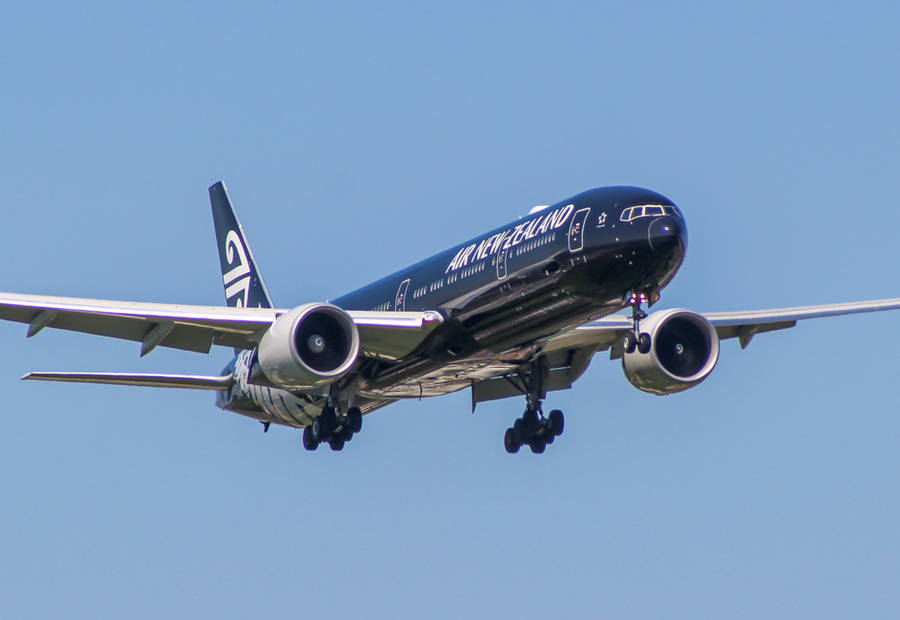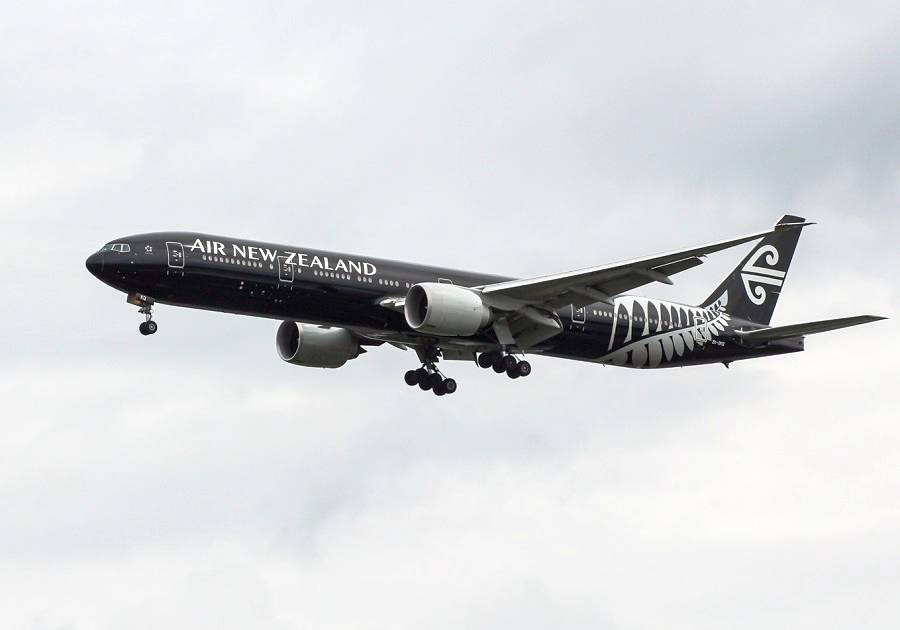The passengers and crew of a Boeing 777 were surprised when the oxygen masks deployed. This caused some distress, but it wasn’t an emergency.
This event happened on the 18th of August this year. It involved a flight that had departed on the evening of the 17th, from Los Angeles International Airport (KLAX). The destination of Air New Zealand flight NZ-5 was Auckland Airport, New Zealand. This is a daily flight for the airline and usually lasts around 12 hours.

We don’t know how many passengers and crew were on board when the oxygen masks dropped in this Boeing 777. But until shortly before this event, the aircraft’s flight appeared to be uneventful. The Air New Zealand flight crew had departed from LAX using runway 24L. For much of the flight, the aircraft cruised at FL300. Then as it progressively got lighter, its crew climbed it to FL320 and FL340.
Sometime after the crew climbed to FL340, the crew decided to descend to FL270. This was due to forecast turbulence in front of them, at their previous altitude. But for reasons that are presently unclear, oxygen masks deployed for the passengers in the 777 cabin. And at the same time, the passengers got an automated message:
“This is an emergency. This is an emergency. Put on your mask”

NZ 777 – How Did The Oxygen Masks Drop?
This message and the dropping oxygen masks understandably alarmed the passengers of the 777. At first, the cabin and flight crew told the passengers to use the masks. But soon afterward, the flight crew informed everyone that the pressure in the aircraft was fine. They could breathe normally without these masks.
Following this event, the flight crew changed altitudes a few more times, navigating through the weather. The Boeing 777 landed uneventfully on runway 05R, in Auckland, with the oxygen masks still hanging above the passengers. This was approximately three hours and twenty minutes after the aircraft left FL340.

Following the event, a spokesman for Air New Zealand stated that the release of the oxygen masks had to do with the rapid descent of the Boeing 777. He added:
“During this descent an automated emergency warning activated requesting customers put on their oxygen masks. We are sorry for the alarming wakeup call on this flight. This was not an emergency situation and the oxygen masks were not required. While our cabin crew and pilots worked quickly to reassure everyone on board, we know it was distressing for our customers.”
The Boeing 777 stayed on the ground in Auckland for around a day and a half, after this event. It then returned to regular service. This is a 777-300ER, with registration ZK-OKQ. It is around ten and a half years old, and Air New Zealand has been its only operator. It is wearing an “All Blacks” livery.




3 comments
Harald Nowak
Well, i heard that at least some 777-300ER are equipped with oxygen bottles for passengers instead of oxygen generators (just like the 787 is too). those can be shutoff and reused and they last longer than 15-20 minutes (which is their purpose – planes with oxygon bottles can overfly Himalaya or Greenland without complicated evasion strategies at hand for depressurizaton events).
Andrew Steitz
I echo the concerns of Peter Staveley. This should have caused a continuation at a much lower altitude which would probably have reduced their range enough to not reach Aukland. I realize that there are not many diversion options over the Pacific but this means convenience was placed ahead of safety. Very disturbing
Peter Staveley
Am I missing something?
Once a passenger mask has been deployed and the passenger has pulled the mask to start the oxygen then it only lasts for 15 minutes and cannot be re-deployed until the chemicals have been refilled.
The article implies that the masks not only dropped but were being used.
Therefore, if the plane remained above 10,000 feet and there been a subsequent and real depressurisation then the passenger masks would be of no use.
So surely the plane should have continued its flight at 10,000 feet or not much higher?
Obviously the crew masks are on a separate system and can be reused.